 After many years of trotting around town with pockets stuffed full of a Palm PDA and a mobile phone, we decide that an all-in-one PDA/smartphone combo would be the best way to reduce our ostentatious trouser bulge.
After many years of trotting around town with pockets stuffed full of a Palm PDA and a mobile phone, we decide that an all-in-one PDA/smartphone combo would be the best way to reduce our ostentatious trouser bulge.
Our first instinct was to go for the Palm Treo 650, a fabulous looking device with a big screen, great ergonomics and a top-notch thumb board, but after we realised that Palm’s promised Wi-Fi card had turned into vapourware, we were forced to look to the Dark Side and switch to a Microsoft solution.
After much chin-stroking and spec sheet sniffing, we settled on the i-mate JAM (aka T-Mobile MDA Compact), a feature-packed little fella running Windows Mobile 2003.
Measuring just 5.8cm wide by 10.8cm deep by 1.81cm high, the handset is considerably smaller than o2’s chunky XDAII, offering similar proportions to Orange’s SPV C500 and Sony Ericsson’s P910.
Attractively finished in a brushed silver finish with a ribbed black side section, the JAM is of a fairly minimalist design, with call and end buttons sitting beneath the 2.8in TFT transflective screen (240 x 320 pixels), plus three buttons and a rocker controller for accessing the built-in calendar, contacts and other applications.
If anything, the case is a little too sleek for its own good, with its shiny finish making it a bugger to keep a grip on at times. We recommend buying a ‘rubberised’ case like those from proporta.com for safety.
 The left hand side sports the camera button, volume control and voice memo switch, none of which are particularly well placed (it’s all too easy to fire off the voice memo/camera switched when turning the handset on).
The left hand side sports the camera button, volume control and voice memo switch, none of which are particularly well placed (it’s all too easy to fire off the voice memo/camera switched when turning the handset on).
On the opposite side can be found the on/off switch and slightly fiddly stylus silo, while the 1.3 megapixel camera lens and small mirror can be found on the back.
In use, the tri-band GSM/GPRS JAM 416MHz device seemed nippy enough, with the Intel XScale PXA272 processor providing enough muscle for any tasks we threw at it.
The handset comes with a rather stingy 64MB of RAM installed (57.41MB available to the user), with 7.6MB of ROM also available for backing up data.
Bluetooth support is built in, and there’s a SD card slot for adding extra storage capacity or for fitting a Wi-Fi card (our SanDisk Wi-Fi card worked fine on the JAM).
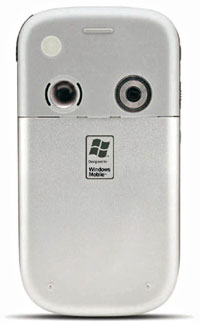 Performance
Performance
After six months with the phone, we’re still generally pleased with its performance but there are some niggles.
First off, the built in camera is absolutely rubbish. Despite its 1.3 megapixel credentials, we’ve had better results off much lower spec’d camera phones and you certainly won’t be printing out too many snaps captured on the thing.
Voice quality isn’t great and the sound quality fell considerably behind regular mobile phones, with the speakerphone being somewhat under-powered. MP3 playback quality was good though.
Although the on-screen keyboard comes with several intuitive interfaces, we’d still prefer a hardware keyboard, especially when we’re out and about – in fact, the awkwardness of inputting text onscreen via a stylus means that we may well be considering the new Treo 700w when we upgrade phones.
Battery life proved excellent throughout our test period, providing enough juice to keep the MP3 going for around five hours.
In general use, we found it prudent to charge the phone daily using the provided mini-USB sync/charge connector – a handy way of charging the phone from a notebook.
At £359 without a phone contract, the i-mate JAM isn’t the greatest value, but with a slew of much cheaper contract deals available, we can recommend it as an excellent, albeit not perfect, all round, all-in-one PDA/smartphone.
RATING: 85%
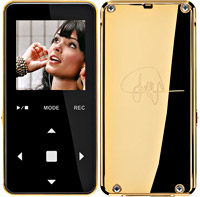 For emotionally insecure types needing the reassuring sparkle of ostentatious bling around their neck, the new gold-plated deluxe MP3 player from Jens of Sweden should be a Godsend.
For emotionally insecure types needing the reassuring sparkle of ostentatious bling around their neck, the new gold-plated deluxe MP3 player from Jens of Sweden should be a Godsend.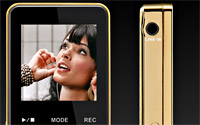 The player can also display pictures and text documents transferred over its USB port.
The player can also display pictures and text documents transferred over its USB port.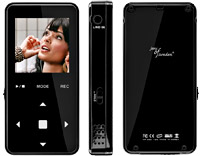 Perhaps mindful of the torrent of complaints that met Apple’s super scratchy Nano player, Nylander added, “The display is sharp and the player is both smaller and more resistant to scratches or blows than hard disk-based players.”
Perhaps mindful of the torrent of complaints that met Apple’s super scratchy Nano player, Nylander added, “The display is sharp and the player is both smaller and more resistant to scratches or blows than hard disk-based players.”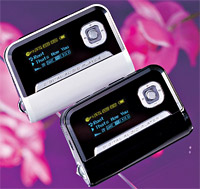 MobiBlu’s soon-to-be-released DAH-1900 MP3 Player (256mb/512mb/1gb) claims to have the longest battery life of any MP3 player in the entire known universe.
MobiBlu’s soon-to-be-released DAH-1900 MP3 Player (256mb/512mb/1gb) claims to have the longest battery life of any MP3 player in the entire known universe.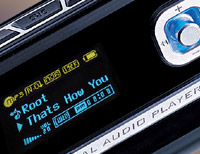 The display can be used to stream song lyrics for pub-like solo singalongs, courtesy of an editable Auto Lyric system.
The display can be used to stream song lyrics for pub-like solo singalongs, courtesy of an editable Auto Lyric system. For nippy transfer of files from a PC, the DAH-1900 offers a High-Speed USB 2.0 interface at up to 40 Mbps transmission speed.
For nippy transfer of files from a PC, the DAH-1900 offers a High-Speed USB 2.0 interface at up to 40 Mbps transmission speed.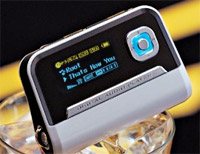 Available colours
Available colours In a feast of digital convergence, Pantech & Curitel have announced the launch of their new multimedia-tastic PT-S160 phone.
In a feast of digital convergence, Pantech & Curitel have announced the launch of their new multimedia-tastic PT-S160 phone.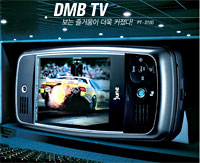 The PT-S160 doubles up as a PMP (Portable Multimedia Player) and a satellite DMB receiver, with a sliding design only showing keys for DMB functions when closed.
The PT-S160 doubles up as a PMP (Portable Multimedia Player) and a satellite DMB receiver, with a sliding design only showing keys for DMB functions when closed.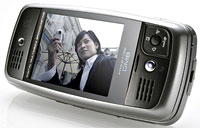 The screen can be switched between landscape and portrait formats.
The screen can be switched between landscape and portrait formats. The makers claim a talk time of 300 minutes and a hefty standby time of 300 hours (although we’ve no idea how long you’ll get when watching TV).
The makers claim a talk time of 300 minutes and a hefty standby time of 300 hours (although we’ve no idea how long you’ll get when watching TV). Interestingly, after
Interestingly, after  Mr Gates, speaking in the keynote address at the Consumer Electronics Show (CES) in Las Vegas, evangelised the “arrival of the much-trailed ‘digital lifestyle’” (which of course, we here at Digital Lifestyles just loved when
Mr Gates, speaking in the keynote address at the Consumer Electronics Show (CES) in Las Vegas, evangelised the “arrival of the much-trailed ‘digital lifestyle’” (which of course, we here at Digital Lifestyles just loved when  Happy New Year!!Since the New Year has just begun, a piece focusing on last year, the one that has just begun and the developments suspected to emerge during it seemed justified.
Happy New Year!!Since the New Year has just begun, a piece focusing on last year, the one that has just begun and the developments suspected to emerge during it seemed justified.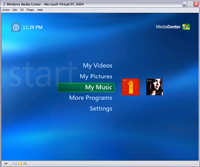 You might wonder why I am so confident in this prediction: Afterall, Microsoft has been pushing out
You might wonder why I am so confident in this prediction: Afterall, Microsoft has been pushing out 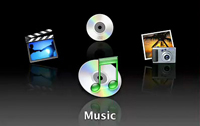 There were of course
There were of course  However, this has always been on quite specific Mac-related Websites, and not in main stream media.
However, this has always been on quite specific Mac-related Websites, and not in main stream media.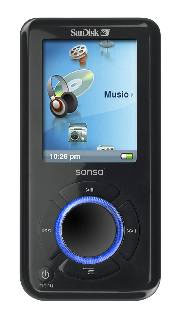 Sandisk have whipped out two iPod nano-style flash-based music players at CES 2006.
Sandisk have whipped out two iPod nano-style flash-based music players at CES 2006.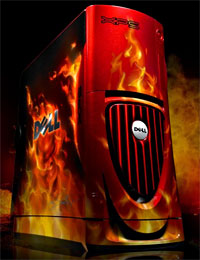 Clearly suffering from an overdose on the hyperbole intake, Michael Dell has been getting all lyrical about Dell’s new ideas, unveiled at CES 2006.
Clearly suffering from an overdose on the hyperbole intake, Michael Dell has been getting all lyrical about Dell’s new ideas, unveiled at CES 2006.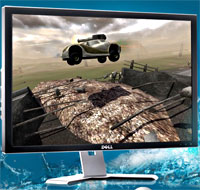 First up is the new Dell XPS 600 Renegade, a powerful, high-end gaming PC described as a (here we go again) ‘manifestation of power so pure it can only be described as supernatural.’
First up is the new Dell XPS 600 Renegade, a powerful, high-end gaming PC described as a (here we go again) ‘manifestation of power so pure it can only be described as supernatural.’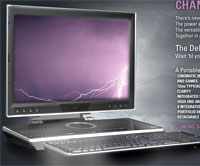 The attractive monitor offers WQXGA resolution (that’s 2560×1600 pixels to normal people), fast 11ms grey-to-grey response time, 700:1 contrast ratio and an integrated 9-in-2 memory card reader.
The attractive monitor offers WQXGA resolution (that’s 2560×1600 pixels to normal people), fast 11ms grey-to-grey response time, 700:1 contrast ratio and an integrated 9-in-2 memory card reader.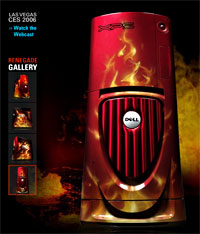 We’re not sure what a ‘portfolio’ design is, but this thing’s sure got it, along with ‘anodized articulating hinges’ and a detachable wireless keyboard and mouse.
We’re not sure what a ‘portfolio’ design is, but this thing’s sure got it, along with ‘anodized articulating hinges’ and a detachable wireless keyboard and mouse. Web browser company Opera today announce they’re bring their Web browser with AJAX support to chips for use in Consumer Electronics (CE) applications.
Web browser company Opera today announce they’re bring their Web browser with AJAX support to chips for use in Consumer Electronics (CE) applications. They’ve been putting their browsers on different platforms for a while, like the
They’ve been putting their browsers on different platforms for a while, like the 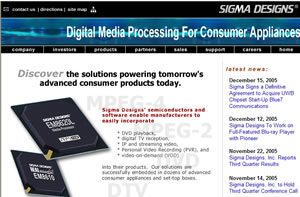 We’re sure you, dear reader, know what AJAX is, but just incase – it stands for Asynchronous JavaScript and XML. This translates to being able to use a Web browser more like a computer-based application.
We’re sure you, dear reader, know what AJAX is, but just incase – it stands for Asynchronous JavaScript and XML. This translates to being able to use a Web browser more like a computer-based application.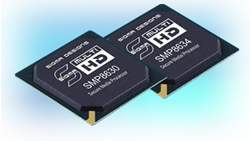 The most often cited example is Google’s Gmail.
The most often cited example is Google’s Gmail. We like “world firsts” so when integrated-circuit providers Micronas announced that they were the planet’s first company to incorporate a Dolby Virtual Speaker into a chipset designed specifically for televisions, we simply had to tell you all about it.
We like “world firsts” so when integrated-circuit providers Micronas announced that they were the planet’s first company to incorporate a Dolby Virtual Speaker into a chipset designed specifically for televisions, we simply had to tell you all about it.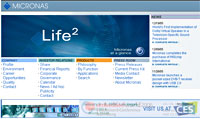 Dolby Virtual Speaker creates the illusion of five speakers by using room modelling techniques. This, apparently, sets it apart from other virtualizers.
Dolby Virtual Speaker creates the illusion of five speakers by using room modelling techniques. This, apparently, sets it apart from other virtualizers.